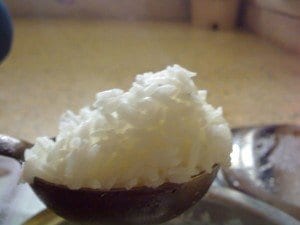 Beans and rice are two ingredients that are common to many meals in the typical Western diet. However, a study conducted in Costa Rica has found that lightening up on the rice and eating more beans could be better for overall health.
Beans and rice are two ingredients that are common to many meals in the typical Western diet. However, a study conducted in Costa Rica has found that lightening up on the rice and eating more beans could be better for overall health.
The study, which was conducted on almost 2,000 men and women, found that those who regularly replaced a serving of white rice with a serving of beans were 35% less likely to display precursor symptoms for diabetes. The researchers reported their results in the American Journal of Clinical Nutrition.
“Rice is very easily converted into sugar by the body. It’s very highly processed, it’s pure starch and starch is a long chain of glucose,” said Frank Hu, one of the researchers with the study. Hu is a professor of nutrition and epidemiology at Harvard School of Public Health in Boston, Massachusetts. “Beans compared with rice contain much more fiber, certainly more protein and they typically have a lower glycemic index — meaning they induce much lower insulin responses,” continued Hu. Though beans do contain significant amounts of carbohydrates, the body must work more to break them down, resulting in slower digestion time and a reduced impact on insulin production and blood sugar.
Hu’s research team analyzed the diets of almost 2,000 men and women from Costa Rica, who were participating in a study lasting from 1994 to 2004 that looked at risk factors for heart disease. At the beginning of the study, none of the participants were diabetic.
As with many industrialized nations, Costa Rica has seen its diabetes rates begin to soar. The urbanization of the country, along with its increased wealth, has caused increases in the consumption of white rice; simultaneously, consumption of beans has decreased, according to Hu. This increase in rice consumption could be part of the reasoning behind the nation’s rising diabetes rates: study participants who ate more white rice over a long-term period had higher blood pressure in addition to lower levels of good cholesterol and increased levels of fat and sugar in their blood.
These are well-known risk factors for metabolic syndrome, a series of conditions that dramatically increase risk of developing Type 2 diabetes and heart disease.
While those who ate more rice were at higher risk for metabolic syndrome, individuals who ate two servings of beans for every serving of white rice were usually at lower risk. Such practices of replacing rice with beans reduced the risk of metabolic syndrome by 35%.
While rice generally makes up a significantly larger portion of the average diet in countries outside the U.S., Americans have been consuming more and more rice every year, according to the U.S. Department of Agriculture. In 1980, Americans consumed 9.5 pounds of rice per person every year; in 2008, that number rose to 21 pounds per person. At the same time, Americans have consumed less dry beans — about 7 pounds per year.
Hu says that such an increase in consumption of white rice is dangerous, especially when compared to brown rice. According to Hu, eating white rice “is like eating a candy bar — the fiber and other nutrients are stripped away.” The increases in consumption of white rice “will have long-term metabolic effects,” added Hu. “It would be useful to introduce more legumes, including beans, into our diet to replace white rice and some of the red meat.”